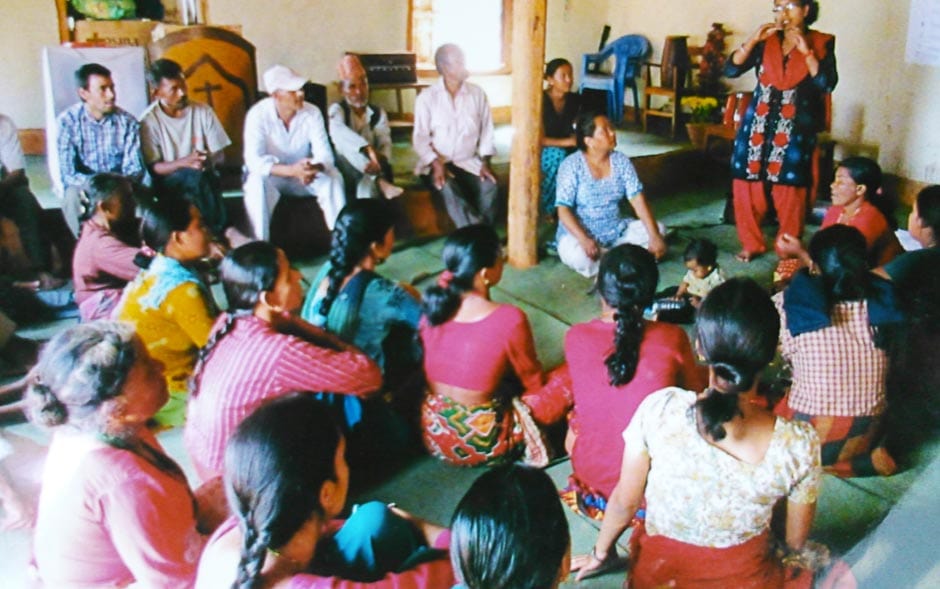Building Solidarity Around Resource Management for Women
By: Katie Douglas, WEA Intern
For Nanu Ghatani of the Lalitpur District in Nepal, staying silent in the face of injustice and oppression was never an option.
Nanu’s strength, courage and determination was first tested when she moved villages to be married at the age of 14. She soon learned that she was not permitted to use produce in the forests surrounding her community. Nanu was told to remain silent and sneak the supplies she needed, but instead, she refused and organized an oppositional campaign. She then mounted campaigns against regional human trafficking, and though her husband threatened to leave her, Nanu again refused to back down. Said she of this time:
“I did not stop because I knew what I did was right.”
For Nanu, the next steps in her local movement came after she began attending trainings with the Himalayan Grassroots Women’s Natural Resource Management Association’s (HIMWANTI).
HIMWANTI is an organization that focuses its projects on the issues of gender justice, environmental protection, and land and resource rights. In partnership with WEA, the group is continuing its work to both develop the aptitude of local women leaders like Nanu in natural resource management and to document the success of women who have led community forest management practices.
While women are the primary providers for their families in Nepal, this also puts them at great risk to gender-based violence and harassment as they travel great distances from their homes in search of food and water. Nepal reported that nearly half of its country’s women had experienced gender based violence during their lifetime, and this dramatically increased for women in rural areas, and with lower caste or economic standing. And, as climate change makes basic natural resources scarcer, women are forced to travel to increasingly isolated and dangerous areas. With 75% of rural women engaged in agricultural production, the depletion and degradation of forest resources is felt deepest amongst them, especially because their share of earned incomes is 1/3rd that of men. Thanks to the efforts of women like Nanu, and the support of HIMWANTI-Nepal, there is change and progress on both these fronts.

Nanu Ghatani, president of the HIMAWANTI-Kavre District Chapter, speaking during a training session. Photo: HIMAWANTI
By providing rural women with the opportunity to come together and build solidarity around natural resource management, access, and the equitable distribution of their benefits, HIMAWANTI and local female leaders are doing critical work to sustain community forestry. HIMAWANTI achieve their vision through district-wide events, conducting studies, policy reviews and gathering recommendations for a gendered analysis of rural women’s rights and natural resource management strategies. Today it is Nanu, and other inspired women leaders, who are able to bring forth the issues of the lack of female voice in local land decisions, the benefit of agricultural sharing, domestic violence, and how to create future opportunities of leadership roles for women in forest food sourced communities.
After her HIMWANTI training, Nanu conducted literacy campaigns in her region, advocated for her community’s access to free electricity, formed more than 20 women’s savings groups, and rose to president of HIMWANTI-Nepal’s Kavre District Chapter. Although she received little support from her family, Nanu persevered on to create a support system for the women of her community, and to become a central voice of female leadership and forest resource management.
There is hope for the future, and as Nanu says:
“Change is possible…if you don’t believe just take me as an example.”
